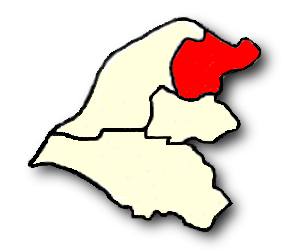|
Ned Painter
Edward Painter (1784 – 18 September 1852), better known as Ned Painter, was an English bare-knuckle prize fighter. He was born in Stretford, then in Lancashire, and was possibly the son of John and Mary Painter baptised at Stretford Old Chapel(now St Matthews) Stretford on 15 February 1784. Boxing career Painter is known to have served time in King's Bench Prison. His first fight was against the Irish boxer J. Coyne, who stood tall and weighed ; Painter was a stone lighter and 5 ft in (1.77 m). The contest took place at St Nicholas near Margate on 23 August 1813, and after 40 minutes Painter emerged victorious. On 17 May 1814, Painter fought Tom Oliver the Gardener at Shepperton Range, a brutal bout that Painter lost, both men incurring serious injuries. Historian Pierce Egan described the bout as "enough to any two men", and by the time of his defeat in the 8th round, stated that Painter was "quite blind, and his nose beat flat upon his face", while ... [...More Info...] [...Related Items...] OR: [Wikipedia] [Google] [Baidu] |
Stretford
Stretford is a market town in Trafford, Greater Manchester, England, sited on flat ground between the River Mersey and the Manchester Ship Canal; the Bridgewater Canal bisects the town. The town is located south of Manchester, south of Salford and north-east of Altrincham. Stretford borders Chorlton-cum-Hardy to the east, Moss Side and Whalley Range, Manchester, Whalley Range to the south-east, Hulme to the north-east, Urmston to the west, Salford to the north and Sale, Greater Manchester, Sale to the south. In 2011 it had a population of 46,910. Within the boundaries of the Historic counties of England, historic county of Lancashire, Stretford was an agricultural village in the 19th century; it was known locally as ''Porkhampton'', due to the large number of pigs produced for the Manchester market. It was also an extensive market-gardening area, producing more than of vegetables each week for sale in Manchester by 1845. The arrival of the Manchester Ship Canal in 1894, and ... [...More Info...] [...Related Items...] OR: [Wikipedia] [Google] [Baidu] |
